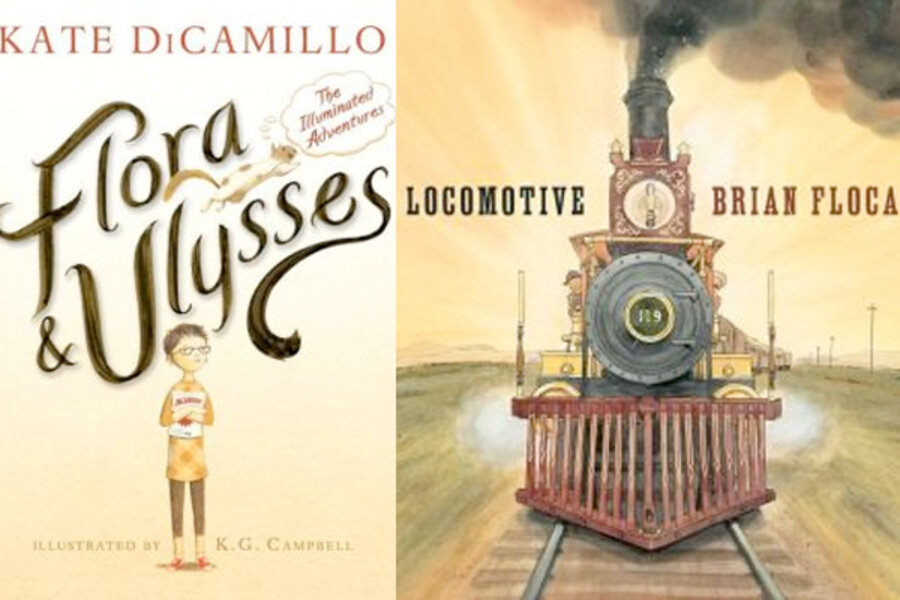Kate DiCamillo's 'Flora & Ulysses' captures Newbery, Brian Floca's 'Locomotive' wins Caldecott Medal
Loading...
The most prestigious award in children’s literature was awarded this year to a book about a plucky girl and her sidekick, a superhero flying squirrel who can type poetry.
Kate DiCamillo’s “Flora & Ulysses: The Illuminated Adventures,” illustrated by K.G. Campbell, won the Newbery Medal as the best children’s book of 2013. The decision was announced by the American Library Association in Philadelphia on Monday morning.
Brian Floca, writer and illustrator of “Locomotive,” won the Caldecott Medal for best illustrated book. “Locomotive” presents a visual journey with sketches of an 1869 railroad trip taken by a family traveling from Omaha to Sacramento.
As a result of the Newbery Medal, “Flora & Ulysses” is enjoying renewed attention after gaining praise upon its publication last year. The story opens with a neighbor sucking up a squirrel in her high-powered Ulysses Super-Suction Multi-Terrain 2000X vacuum. When he emerges from the vacuum with the help of 10-year-old Flora, it is with superhero powers: Ulysses the squirrel can now lift the vacuum above his head, type poetry, and go on a series of hilarious adventures with Flora.
It’s the second Newbery for DiCamillo, who’s on a winning streak – she won the award in 2003 for her young adult novel, “The Tale of Despereaux.” She was also recently named National Ambassador for Young People’s Literature by the Library of Congress to promote reading among youth across the country.
As for “Locomotive,” Monitor reviewer Augusta Scattergood describes it as a history of the Transcontinental Railroad in maps and pictures, a timetable, and an illustrated explanation of steam power.”
The book’s fantastic prose matches its beautiful illustrations, says Scattergood, with phrases like: “Here is how this road was built, with a grunt and a heave and a swing” and the “smoke and cinders, ash and sweat” of the coal engine. The award is given “to the artist who had created the most distinguished picture book of the year.”
The Newbery and Caldecott Medals, first awarded in 1922 and 1938, are among the oldest and most distinguished prizes in children’s literature.
Runners-up, presented as Honor Books, were also announced. They are as follows:
Newbery Honor Books: “Doll Bones,” by Holly Black; “The Year of Billy Miller,” by Kevin Henkes; “One Came Home,” by Amy Timberlake; “Paperboy,” by Vince Vawter
Caldecott Honor Books: “Journey,” written and illustrated by Aaron Becker, “Flora and the Flamingo,” written and illustrated by Molly Idle; “Mr. Wuffles!” written and illustrated by David Wiesner







